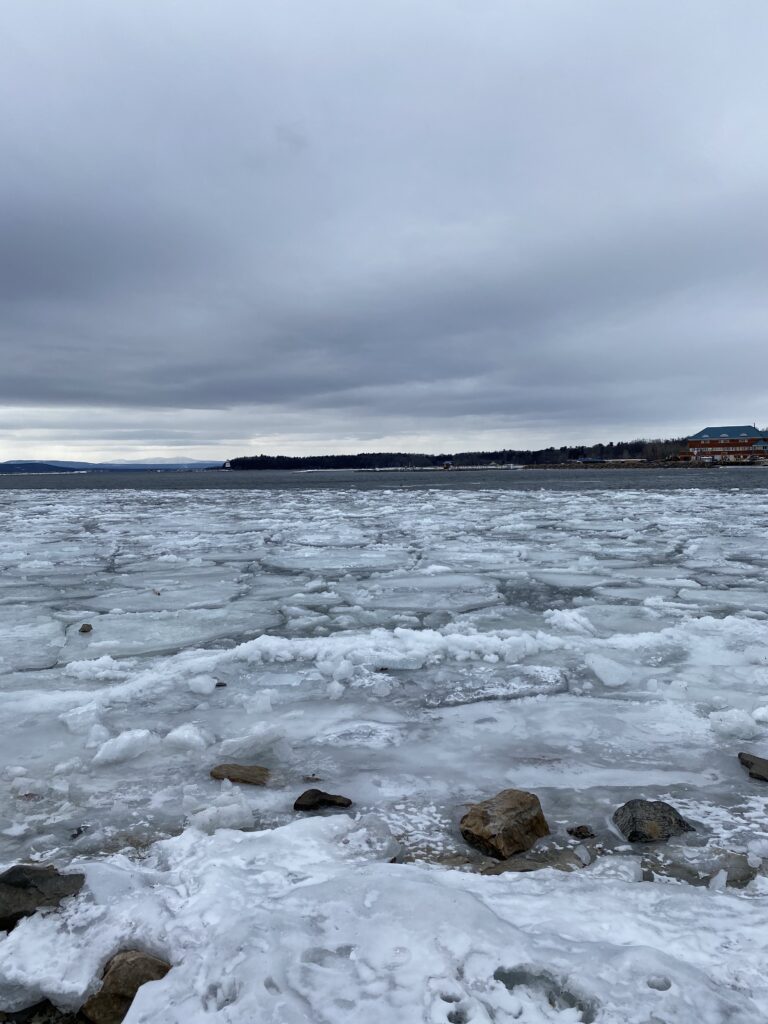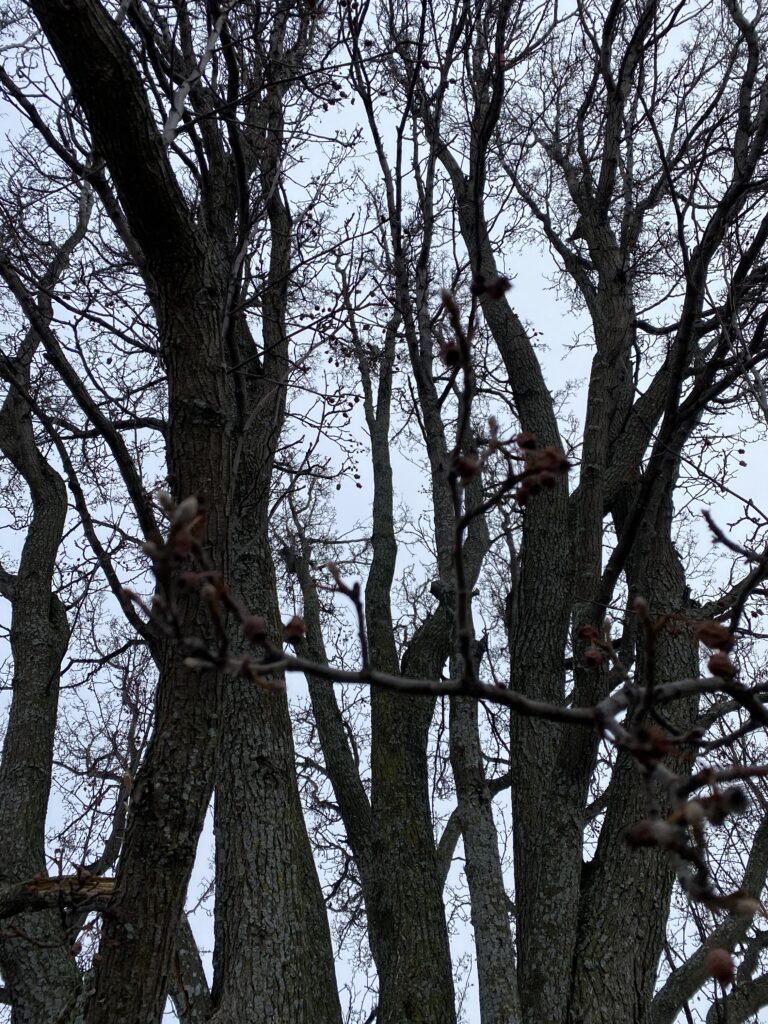On the freezing cold day of March 5th, I headed down to the waterfront to observe the phenological changes of the area. One thing that made this day stand out was the hotter weather and rain earlier in the week. This had caused a large amount of the snow to melt, so spotting tracks was slightly harder than when the snow was fresh.

While I did not find any defined tracks or evidence of animal activity, there were several ducks swimming in the distance of the above photo. I cannot believe that ducks will still swim around in this freezing water! I also think this photo is super fascinating due to the ice formations on the water. The ice sheet along the coast was broken into large chunks floating on the water and waves. There was no snow left on the beach except where the water and shore met, and there was a large blue buoy that had washed up on the shore along with some large twigs. The buoy was really the only sign of human activity, as all of the parks and areas I visited were free of litter. The only evidence were the large bootprints in the almost melted snow.

When looking at the flora around the waterfront, a lot was pretty grey. Grass peeked through the frozen snow patches, but it varied in color from a muddled green to dark brown. These tree buds were all in very early stages of growth, with only small grey-colored bulbs on the end of the twigs. This was the case with the other trees and bushes in the area as well.
Overall, this trip really showed the city in almost a seasonal depression. The trees and landscape had become grey and muddy, and there was little life to be found anywhere. Although this time of the year can be cold and a bit dreary, it is exciting to see the first signs of spring in the growing buds and melting snow.